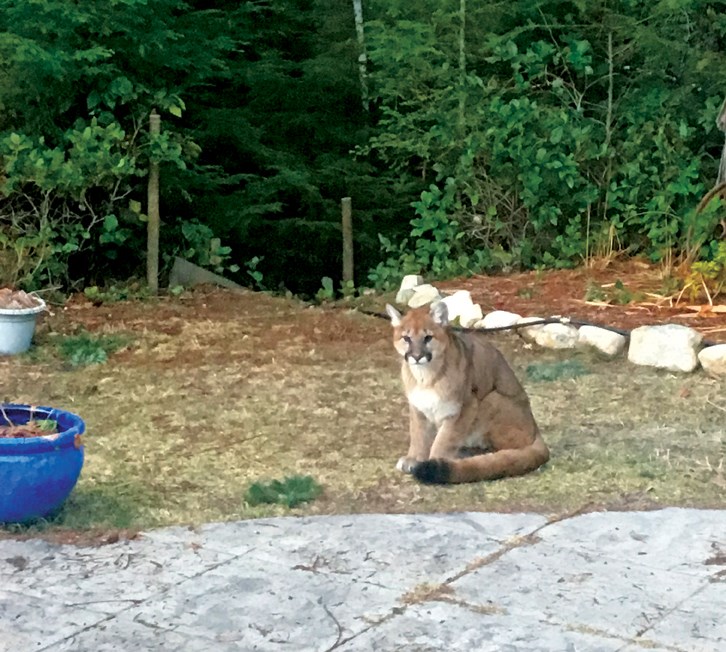2016 was an unusually busy year for cougar sightings on the Sunshine Coast, and it also saw more than a half-dozen grizzly bear sightings, according the year-end report from WildSafe BC’s local coordinator.
The report was presented to the Sunshine Coast Regional District’s (SCRD) Jan. 26 corporate and administrative services meeting.
The Conservation Officer Service (COS) logged 101 reports about cougars between Jan. 1 and Oct. 28, 2016. There were only 39 in 2015.
Cougars ranked number two on the list of wildlife sightings behind black bears. WildSafe coordinator Marina Stjepovic said in her report that most of the sightings were in the southeastern part of the Coast around Howe Sound and “a few of the calls were related to livestock and pet conflicts, but no concerns were reported about human safety.”
Black bear reports, on the other hand, were down from 2015. The COS had 214 reports in 2016 compared to 304 in 2015, but over that same Jan. 1 to Oct. 28 period, there were nine calls about grizzlies.
Two of those sightings sparked a lot of public attention. A grizzly was killed by a property owner in Egmont last August after it attacked livestock. At the time, conservation officer Dean Miller told Coast Reporter it was the first confirmed grizzly the COS had ever encountered in the area. Another grizzly was trapped and relocated after being spotted in West Sechelt last September.
While issues related to bears tend to drop off over the winter months, cougars are still very active. This week alone cougars have been seen near homes in Bonniebrook, where a resident photographed a mother and cub that had been in the area for several days, and in the Crystal Road area of upper Roberts Creek where one of the big cats was spotted in a yard.
Stjepovic noted that last year’s grizzly sightings also contributed to a record year for visits to WildSafe’s Facebook page.
“WSBC was able to provide information quickly and then carefully monitor and respond to comments and messages as they arose. This helped to minimize misconceptions and maximize educational opportunities,” her report said.
Results like that, and WildSafe’s other work during the season, impressed SCRD directors. “Low cost. High value,” said Gibsons director Jeremy Valeriote.
One of WildSafe’s 2017 goals is to “encourage local governments to improve bylaws and policies that would reduce human-wildlife conflict ... as well as enforceable garbage collection bylaws.”
That struck a chord with director Mark Lebbell of Roberts Creek. “One observation to reinforce as we look at an organics management strategy is that the number one cause of the negative wildlife-human interaction was unsecured garbage,” he said.
Frank Mauro of Pender Harbour said there’s also an opportunity for more public education, especially when it comes to feeding deer.
“It’s a difficult thing to convince people not to feed the pretty deer.”
The SCRD is one of the funding agencies for the WildSafe program, along with the Ministry of the Environment, BC Conservation Foundation, Lehigh Materials and the Sunshine Coast Rod and Gun Club.



